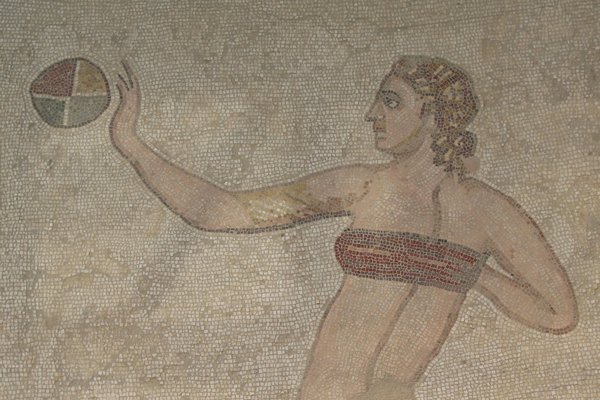Italy
Villa Romana del Casale
The Villa Romana del Casale is a Late Roman palatial residence renowned for its exceptional mosaics.
Located in rural Sicily, the luxury villa was the center of a huge agricultural estate. The floors of its 50 rooms are covered almost completely with well-preserved coloured mosaics. They depict hunting scenes, domestic scenes and flora and fauna. The mosaics probably were made by North African craftsmen.
Community Perspective: Mindboggling, as this is by far the largest set of Roman mosaics in the world. You view them by walking on raised walkways, which get crowded when the tour groups arrive. A visit may take 2 hours.
Site Info
Official Information
- Full Name
- Villa Romana del Casale (ID: 832)
- Country
- Italy
- Status
-
Inscribed 1997
Site history
History of Villa Romana del Casale
- 1997: Revision
- Previously on T List as Piazza Armerina (1984)
- 1997: Inscribed
- Inscribed
- Type
- Cultural
- Criteria
- i
- ii
- iii
Links
- UNESCO
- whc.unesco.org
- Official
-
- villaromanadelcasale.it — villaromanadelcasale.it
- Related
-
- de.wikipedia.org — The German wiki on Villa Romana del Casala
All Links
UNESCO.org
- whc.unesco.org — whc.unesco.org/
Official Website
- villaromanadelcasale.it — villaromanadelcasale.it
Related Resources
- de.wikipedia.org — The German wiki on Villa Romana del Casala
Community Information
- Community Category
- Archaeological site: Ancient Rome
- Secular structure: Residence
Travel Information
Recent Connections
-
Perfect Inscriptions
1997 -
Griffins
In the mosaic of the Corridor of the Gr… -
Located in a TCC Territory
Sicily
Connections of Villa Romana del Casale
- History
-
-
Normans
"It seems that the final act of destruction [of the villa] was the work of the Norman ruler of Sicily, William I the Bad, around 1155." (AB Ev)
-
- Architecture
-
-
Early Under-floor Heating
See en.wikipedia.org
-
Octagons
The octagonal frigidarium (cold room) of the baths complex (AB Ev) -
Mosaic art
"The villa is one of the most luxurious of its kind. It is especially noteworthy for the richness and quality of the mosaics which decorate almost every room; they are the finest mosaics in situ anywhere in the Roman world." (Official description)
-
- Damaged
-
-
Destroyed or damaged by Earthquake
"There are indications that the earlier house was destroyed by an earthquake in the first decade of the 4th century". (AB Ev)
-
- World Heritage Process
-
-
Perfect Inscriptions
1997 -
WHC locations
Naples (1997) -
Reconstruction regarded as unsatisfactory
"A great deal of conservation work was carried out, some of which is now acknowledged to have been inappropriate, in particular the use of reinforced concrete slabs for supporting some of the mosaics." (AB Ev)
-
- Religion and Belief
-
-
Hercules
"The spacious triclinium (dining room) has apses on three sides and is decorated with mythological scenes, notably the Labours of Hercules." (AB Ev) – "The Triclinium has magnificent mosaics with mythological motives related to the Labours of Hercules, showing the arrow stricken giants, the carnage after the Twelve Labours of Hercules, and Hercules' coronation and introduction in Olympus." -
Griffins
In the mosaic of the Corridor of the Great Hunt, a depiction of a griffin "on top of a box with a human bait inside" can be found -
Phoenix
In the mosaic of the Corridor of the Great Hunt, a depiction of a phoenix "rising from the ashes of its burning nest" can be found. It is part of an allegory of India or Arabia. -
Nymphaeum
"On the south side of the villa is an elliptical peristyle, the Xystus, with a semi-circular nymphaeum on the west side."See en.wikipedia.org
-
- Human Activity
-
-
Erotic art
Erotic Scene mosaic - "The kissing lovers have been identified as Cupid and Psyche, who go through a whirlwind of events before finally marrying"
-
- Constructions
-
-
Baths
"The monumental entrance (...) opens into a courtyard, on to which faces the elaborate baths complex. The oval palaestra (exercise area) gives access to an impressive octagonal frigidarium (cold room) and thence through the tepidarium (warm room) out of which open three caldaria (hot baths). (AB Ev) -
Protective Shelters
Plexi glass covering protects the mosaics -
Monumental Fountains
"the impressive main peristyle, with its monumental fountain in the centre" (AB Ev) – "The elegant peristyle garden is decorated with a three-basin fountain, in the centre of which decoration featuring fish swimming among the waves can be seen."See en.wikipedia.org
-
Aqueduct
Villa Romana del Casale – "The Villa Romana del Casale received its water supply from two aqueducts. One entered from the North and fed the piscina or pool of the baths. There are several remaining parts of this aqueduct along the entrance to the villa. The other aqueduct entered from the East, feeding a reservoir behind the Triclinium."
-
- WHS on Other Lists
-
-
Located in a TCC Territory
Sicily
-
- Timeline
-
-
Built in the 4th century
Between 310 and 340 (AB ev)
-
- WHS Hotspots
News
No news.
Recent Visitors
Visitors of Villa Romana del Casale
- Afshin Iranpour
- Alexander Barabanov
- Alexander Lehmann
- Ammon Watkins
- Ana Lozano
- Argo
- Ask Gudmundsen
- Aspasia
- Atila Ege
- BaziFettehenne
- Bill Maurmann
- Bin
- Birgitte Sørensen
- Bram de Bruin
- Brendan Carroll
- Bropyk
- Caspar
- Cezar Grozavu
- ChrisN
- Claire Bradshaw
- Clyde
- Cristina Erba
- Dagmara
- Daniela Hohmann
- Daniel Chazad
- David Berlanda
- Dimitar Krastev
- Dimitrios Polychronopoulos
- Dr. Caligari
- Echwel
- eljx1988
- Els Slots
- Emilia
- Erik Jelinek
- Eva Kisgyorgy
- Evgenii
- Fan Yibo
- Farinelli
- fedemarch92
- Federico P.
- Feldhase
- Felicité
- Femke Roos
- Filip Murlak
- Flexiear
- Fmaiolo@yahoo.com
- Geert Luiken
- George Gdanski
- GeorgeIng61
- giulio25
- grimloch
- Grzegorz Andruszkiewicz
- Hammeel
- Harry Mitsidis
- H Beswick
- Hdhuntphotography
- Hubert
- Iain Jackson
- Ilya Burlak
- Ivan
- Ivan Rucek
- Jacob Otten
- Jakob F.
- Jakubmarin
- janem
- Janina Lehmann
- Jasam
- Jeanne OGrady
- Jens
- Jezza
- João Aender
- Joel on the Road
- Jonas Kremer
- Jurre
- Kasper
- KeithBailey
- KentishTownRocks
- Krzysztof B
- Lara Adler
- Laurine
- Lisu Marian
- Loic Pedras
- Luboang
- Lucio
- Ludvan
- Luis Filipe Gaspar
- Lukasz Palczewski
- Maciej Gil
- Manuelfunk
- MarcoB_0
- Martin
- Martina Rúčková
- Matthewsharris
- MAURO PODDA PANI
- MaxHeAnouBen
- MaYumin
- MH
- MichaelH
- Michael Novins
- Mikko
- Mikko Syrjä
- Ming_9734
- Monica Tasciotti
- nan
- Nasebaer
- Niall Sclater
- Nihal Ege
- PabloNorte
- Patrik
- Paul Schofield
- PeterH
- Peter Lööv
- Philipp Leu
- Philipp Peterer
- phillipmeng
- Pink Bunny
- Piotr Wasil
- Priyaranjan Mohapatra
- Purrfect
- Rafał Kałczuga
- Ralf Regele
- Randi Thomsen
- Remigiusz
- Roccobot
- Rodinia
- Roel Sterken
- Roger Ourset
- Roman Bruehwiler
- Sabrina Liebehentschel
- Samy G
- Sandmann15
- Sergio Arjona
- Shandos Cleaver
- SirLoydd
- Stanislaw Warwas
- stephanvermeulen
- Stijn
- Svein Elias
- Szabolcs Mosonyi
- Szucs Tamas
- Taotao Chen
- Tarquinio_Superbo
- Tevity
- Thomas Buechler
- Thomas van der Walt
- Tim Allen
- Timothy C Easton
- TimPick
- Tom Flaten
- tony0001
- Tsunami
- Twobaconsandaboston
- usagi1974
- Valentina
- ValiaVeweth
- Vanessa Buechler
- Van Hung
- Viaje al Patrimonio
- Waxwing
- Wojciech Fedoruk
- Xander Huang
- Xiquinho Silva
- Yevhen Ivanovych
- Zizmondka
- Zoë Sheng
Community Reviews
Show full reviews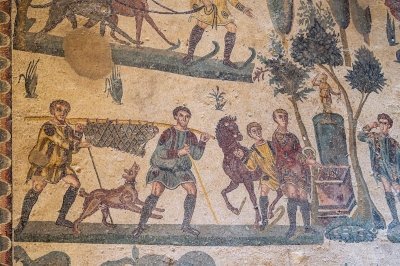
I visited Villa Romana del Casale in September of 2021. It is undoubtedly among the most unique and impressive monuments of antiquity. The very short WH inscription mentions the richness of the mosaics found in practically every room of the villa, and indeed those are altogether remarkable and likely unparalleled among the surviving such artifacts in both quantity and quality.
The mosaics are almost entirely found as floor decorations. With just one or two exceptions, you view them from elevated platforms. There are a few rooms where the damage to the floor is extensive, and only the fragments of the original decorations are visible. But most of the rooms are on the opposite end of the spectrum, with a few damaged areas surrounded by well-preserved mosaics. Some rooms display amazing patterns and vignettes, and the jaws really drop when you come to one of at least a dozen rooms where the floor is veritably a canvas depicting various scenes bound by a common theme, be it pursuits of leisure, commerce, or mythology. The most impressive of all is the “Corridor of the Big Hunt”, a 66-meter long space adorned with scenes involving numerous animals and overseas voyages, although the most famous might be the "Bikini Girls", a depiction of young women engaged in athletic competition.
In Covid times, on a wide-ranging trip around Sicily, Villa Romana del Casale was the only place where advance reservations proved to be essential to get in. I made them online a few …
Keep reading 0 comments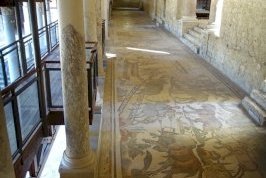
When I visited Aquileia last year, I mentioned in our whatsapp group that these were the greatest Roman mosaics I had hitherto seen. I was wondering what greater mosaics existed on the list. The group feedback was Villa Romana del Casale. I would have gone anyhow. But this way I was quite curious what I would find.
The villa is a 4th century Roman villa that probably was built for the then Roman governor of Sicily. The Romans chose the location for its proximity to the main road between Catania and Agrigento. Nowadays, the area is more of a backwater.
In the 4th century, the Roman empire underwent massive social changes. Prior, the nobility would not reside with their holdings. Instead, they would live in larger cities, directing their farms from afar. With the nobility and upper class moving to the countryside, they built large villas to live in, the Villa Romana del Casale being a prominent and well-preserved example.
As pointed out by others, the mosaics are stunning and large. They cover the whole floor of the villa and tell plenty of stories. The long central aisle (picture) with the story on the delivery chain of arena animals was the best, but there is so much more. Astonishing. And unlike in Aquileia there are few religious mosaics, so both sites are unique in their own way.
The Italians built a visiting trail in the villa running high above the marvelous floors plus a roof. …
Keep reading 0 comments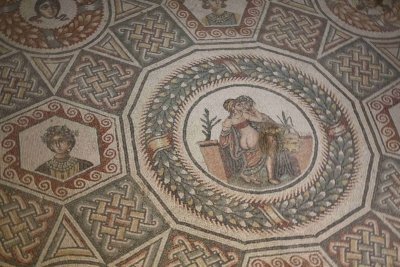
March 2019 - Day 8 of our Sicily trip. After spending the night on a nice Agriturismo near Piazza Armerina, we visited the Villa Casale in the morning.
Yet, there were only few ourists at that time. The whether was crappy, but most of the sight are roofed so the visit was nice anyway. The Villa reminds rather of a construction site than a Museum. You walk 2-3 meters above the mosacis and can see every sinle one. Some of them are in very good shape, others look demolished. Some mosaics look a bit like someone made a joke and depicted todays art in roman style moasaics, especially when looking at the bikini girls or even some nude scenes. Also the way the animals are depicted, is just incredible. Definietly worth a visit, but could be a bit more visitors friendly.
Keep reading 0 comments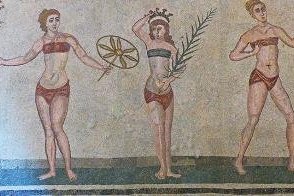
I visited this WHS in May 2015 as a detour from Agrigento on my way to the Val di Noto baroque towns. The Sicilian countryside panoramas on the way to the site itself were already breathtaking but the quantity, the variety, the condition and the details of everyday life in Ancient Roman times depicted on the mosaics of the Villa Romana del Casale near Piazza Armerina were mindboggling. The only place that sprung to mind while visiting this site was Aquileia as there are some similarities between some of the mosaics but this is by far the largest in the world. My favourite mosaics were the mosaic of the two fishing vessels hauling up their net fully loaded with different fish species and crustaceans and the famous mosaic of the female athletes nicknamed the bikini girls. The female athletes perform sports including weight-lifting, discus throwing, running and ball-games. Not far from the Villa Romana del Casale is another Roman Villa called Villa Romana del Tellaro which is worth visiting while you're in the area.
Keep reading 0 comments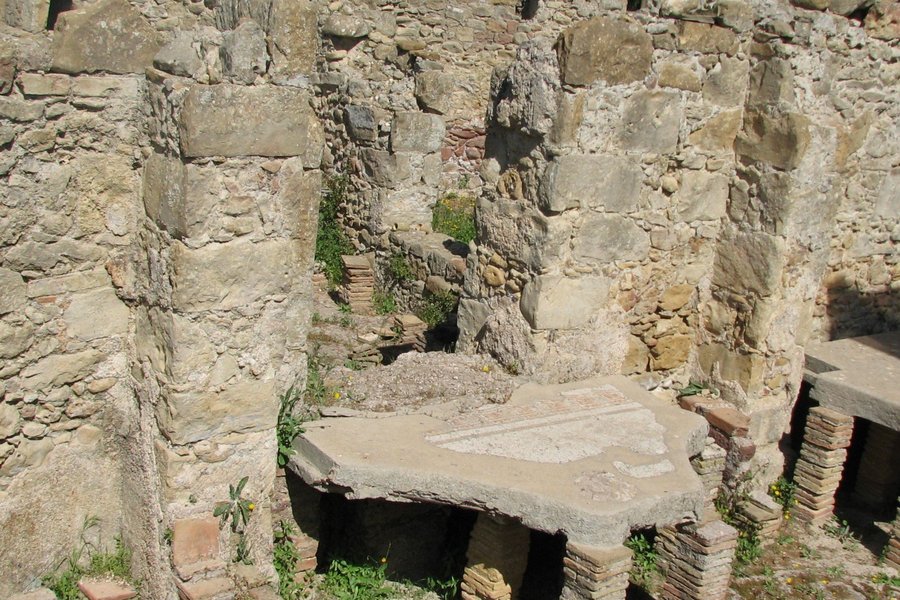
The Villa del Casale is now fully opened and can be visited. I visited it yesterday and I had the place mostly to myself except for a few people scattered here and there. The site now provides a very good idea as to its vastness and the importance of its Master. The visitor can have a glimpse of what it must have been in its full splendor when it served as a sort of buen retiro or as a status symbol for its owner. The decorations which cover most of the 3500 square meter of marble or 37674 ft² provide a very vivid picture of what life in 4th AD Sicily might have been for the privileged few who lived there and the people who were serving under the Villa's Master, who seemed to also enjoy entertain his important guests there. The location is very evocative also as it pertaing its surroundings, the lush nature, and the gentle landscape.
What's stunning is the clearly perceived richness of its rooms, the sauna, the calidarium and frigidarium, the side rooms, the vast halls, the corridors covered in vividly colored mosaics relaying the stories of the ancient gods: Hercules, Odysseus, Poliphemus, not to mention the many men, women, children decorating the floor in hundreds of scenes. The site is now fully accessible, and it costs 10 euros to visit it. The restoration work very efficiently delivers the idea of how stunning this place once was, and still is.
Keep reading 0 comments
Well worth the visit. I visited the site in September 2012. All of the villa now accessible after the removal of the awful plastic glass structure which caused so much damage and has been replaced with wood and copper roof open on all sides to allow air flow around and through the site Damage caused to the mosaics has and still is being replaced using the original methods. Well worth the visit, I do not know about entry costs as over 65 get entry free. More archaeological digs are planned for the future as apparently there might well be more undiscovered building in the village close by the Villa.
Keep reading 0 comments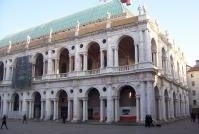
I really love the art there. However, it's really a pity that we could only visit 3 rooms, while you have to pay still 5 euro per person(Fortunately, the Bikini girls is included). According to the people there, they need 2 more years to finish all of the rebuild. Thus, if you have more time, i would strongly recommend to go there later.
Visit time: 7, April, 2011
Keep reading 0 comments
very disappointing that so little of the site is currently open.They only seem to be working on one building at present yet have ripped out the walkways and closed most of the site much earlier than necessary.With a little planning they could easily work in stages and keep most of the site open.What you can see is fantastic but its very frustrating to see tantalizing distant glimpses of so much more in the closed areas.I will return one day when its fully open but unless they get their act together I suspect this may be years away.
Keep reading 0 comments
we have been there on the 6-6-09 and were realy impressed by the neglegance and disorder of the site . we were told that vast amounts of money were pured into but it seem to us all that it migrated to unknown hand and localities - shame on those responsible
Keep reading 0 comments
Doug (USA)
The site of the Villa Casale is amazing. No one seems sure of who it was built for but it had to be someone of great importance. The date is possibly the 3rd-4th centuries AD. The site is covered by a greenhouse of acrylic panels. There are many, many rooms with completely intact floor mosaics in situ. I have never seen anything like it elsewhere, especially at this scale.
Keep reading 0 comments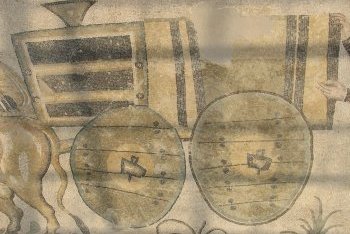
This Roman Villa lies near Piazza Armerina, in Central Sicily. It's a fine location for a countryside villa. I was expecting crowds but was lucky enough to be able to slowly do the rounds almost on my own. The villa is really large, and the mosaics are everywhere.
The 'Bikini Girls' - women athletes - are a set of ten mosaics in two rows in very good condition. The girls are performing exercises, from weightlifting to a ball game. One of them is about to be awarded the palm of victory. Other highlights include the Corridor of the Great Hunt, a long passageway covered with an elaborate hunting scene, and the Triclinium where mythical scenes are depicted including a bloody Battle of the Giants.
As mentioned in the ICOMOS report and various guidebooks, the mosaics are shielded under plexiglass covers. This has the effect of a greenhouse, possibly damaging the mosaics. One of the side effects also is that it creates rasters of shade on the mosaics, making it difficult to get sharp photographs.
Keep reading 0 comments
This is a wonderful trip from anywhere on the island of Sicilia. In the summer it is usually very hot, especially with the sun beating down on the protective roofs that cover the mosaic floors. The entire site is worth a half-day visit, especially the room of the dodieci fatiche d'Ercole (the 12 labors of Hercules) and the long main corridor that shows the many daily chores (hunting, fishing, etc) that were performed daily. Excavations continue through today, with only 1/3 of the site being excavated thusfar. The craftsmanship of the slaves (presumably from nearby Africa) in this Villa is not to be missed.
Keep reading 0 comments
